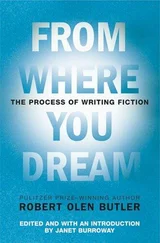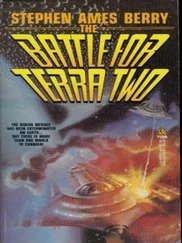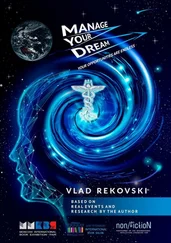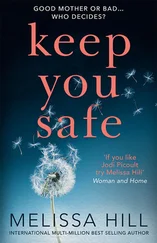‘Sick with what?’ Harry asked, slamming his folder down in front of him.
‘I don’t know.’ Juno sighed. ‘She says she’s been having headaches.’
‘Well, she’s supposed to get permission from the commander to miss a group lesson. And she’ll have to catch up,’ Cai said, then looked down at his tablet. ‘We’re going to look at the article I sent you all from the Journal of Marine Science and Ecology —’
‘Oh,’ said Juno, tapping the correct page on her tablet. ‘I’ve read it already. I think. The one about conservation genetics and coral reefs?’ She saw Astrid straighten up at her words, her eyes alight with excitement.
‘The reefs on Terra-Two?’ she asked, and as she said it she could see them, the rainbow-coloured coral, wreathed in teal weeds. She clapped her hands together in excitement. ‘We’re finally going to learn about them.’ But Astrid was surprised to see that everyone was looking at her quizzically.
‘What are you talking about?’ Harry asked. ‘What reefs?’
‘The coral reefs on Terra-Two,’ Astrid said. Eliot raised an eyebrow.
‘I’m not familiar with that,’ Cai said. ‘I don’t think we have much evidence of the marine life on Terra-Two. Now, can you please open that page?’ He turned to the whiteboard he’d wheeled from the corner. ‘Does this pen work? That’ll do. Right, now. Who can summarize negative frequency-dependent selection…?’ Juno and Harry raised her hands.
AS THE LESSON CONTINUED, the thought niggled at Astrid. She couldn’t remember anymore where she’d come by the notion of coral reefs on Terra-Two, or why she had such a clear image of them in her mind. During dinner that evening, both Commander Sheppard and Igor confirmed that they were not even sure that coral could survive, considering the high ocean temperatures on the planet.
So, during her free time after dinner, Astrid accessed the Damocles ’ online library on her laptop. She discovered quickly that Cai had been right and there was no evidence of reefs, but Astrid followed one link after another, opening tab after tab in an encyclopaedia deep-dive that led her to a few biographies of Tessa Dalton.
Tessa Dalton had been the first person to dream of Terra-Two – although she lived and died in near obscurity. Astrid first heard the name in her second year in the programme, when a bronze statue of Tessa was erected in a red-brick quadrangle at Dalton Academy. The sculpture had been different in every way from the serene marble busts that overlooked the school assembly hall or the stern likenesses of the founders standing watch on the front lawn. A group of parents had complained when it was first donated to the school, because her naked body looked so lifelike. Tessa Dalton’s eyes were protuberant and pupil-less, turned skyward. It was not a flattering likeness: the wasted muscles in her thighs, the puckered scars on her forearms, deflated breasts hanging on the cage of her chest. Astrid came across a news article, dated the first of June, stating that the statue had disappeared.
Astrid already knew that the Dalton estate was over 400 years old. The family owned acres of land north of the River Thames, and had, for centuries, made their fortune from property developments in affluent swathes of the city. During Astrid’s lifetime, they were most famous for the multinational venture capital conglomerate to which they gave their name. But she knew that their school had been named after James Dalton, a maverick nineteenth-century offshoot of their family who worked all his life as an astronomer. James Dalton had discovered that the sun’s second-closest star system – after Alpha Centauri – was a binary. Two stars orbiting like dumbbells around a common centre of mass. Twins, swapping places every century, eternally eclipsing each other.
James’s only daughter, Tessa, devoted her life to watching the stars for signs of another planet. In space – as on Earth – Newton’s Third Law applies. When a star tugs on an orbiting planet, the planet tugs back. From where Astrid was on the ship, the Earth already looked like a blue star in the darkness, but once they reached the edge of the solar system it would blink out of existence. The sun would grow indistinguishable from all the other stars and the only way to tell that there was a little planet spinning in the blackness around it would be a slight wobble measured in the sun’s light.
Years ago, Astrid had been tasked with researching Tessa Dalton for a history paper. It had been a challenge, because history did not have much to say about her even though she had, essentially, discovered Terra-Two.
Tessa published a single paper, proposing the existence of an extrasolar planet circling Dalton’s binary system. Articles supporting and disputing the notion trickled out, but interest in the stars waned until the world’s first deep-space telescope broadcast low-resolution images of Terra-Two. Of course, back then, it had not been called ‘Terra-Two’. It was D56A, just another extrasolar planet in a ‘goldilocks zone’ – an area close enough to its suns’ warmth to sustain life but not so near that it couldn’t thrive.
After the Second World War, UK aircraft manufacturers, like those in the USSR and the United States, had turned their efforts to aerospace engineering. Two decades later, the British Interplanetary Society launched four unmanned satellites at the sun’s nearest stellar neighbours. The initial objective was to examine these solar systems for any signs of life. The project was called Daedalus, and, by all accounts, it was a success. Findings suggested that Tessa Dalton’s planet was terrestrial, with a mass 0.6 that of the Earth’s, and could potentially sustain life. D56A became the focus of attention from astronomical institutions worldwide. It was circled by Soviet satellites in the 80s and was the landing site of NASA and JAXA rovers by the end of that century.
The papers had dubbed D56A ‘Earth-Two’ or ‘Terra-Two’. Some people sported bumper stickers with twin Earths locked together in a peace sign. The Beach Boys released a single titled ‘Another Earth, Another Chance ’, which stayed at number one the entire summer and became the informal motto of the Off-World Colonization Programme.
The year that Astrid was born, the International Astronomical Union held a summit. They reviewed all the data collected in the past forty years about D56A, and after a month of consultations, they tentatively declared the planet habitable. According to most accounts, this was when the race to Terra-Two really began. Both NASA and UKSA suspended their space shuttle programmes indefinitely and swore to send a crew to Terra-Two before 2020.
Just before the 2008 financial crisis, China’s National Space Administration had launched a generation ship to the nearby star system. It was slated to reach Terra-Two by 2120. And although the mission was famously unsuccessful, it spurred engineers on every continent to pioneer the fastest way to leave the solar system.
The UK’s programme would not have been possible without the continual funding of the Dalton estate, and corporations like it. In fact, it was the group’s current owner, aristocratic billionaire edmond Dalton, who had famously claimed, ‘the Americans got a rock, we’ll get a planet.’
During Tessa Dalton’s lifetime, historians claimed, there had been no way for her to predict the presence of an extrasolar planet, let alone a habitable one. And yet, she had. Her diaries and letters home were filled with tales of ‘the beautiful planet’. She described the saltwater lakes and green lagoons, the flourishing plant life and peaceful animals. The soil, she said, was untouched by human feet. Every night she felt the pull of it. She longed to die under the light of its suns but she had been born a century too soon. In 1932, her family committed her to St Augustine’s psychiatric hospital in Kent.
Читать дальше






![Theresa Cheung - The Dream Dictionary from A to Z [Revised edition] - The Ultimate A–Z to Interpret the Secrets of Your Dreams](/books/692092/theresa-cheung-the-dream-dictionary-from-a-to-z-r-thumb.webp)





